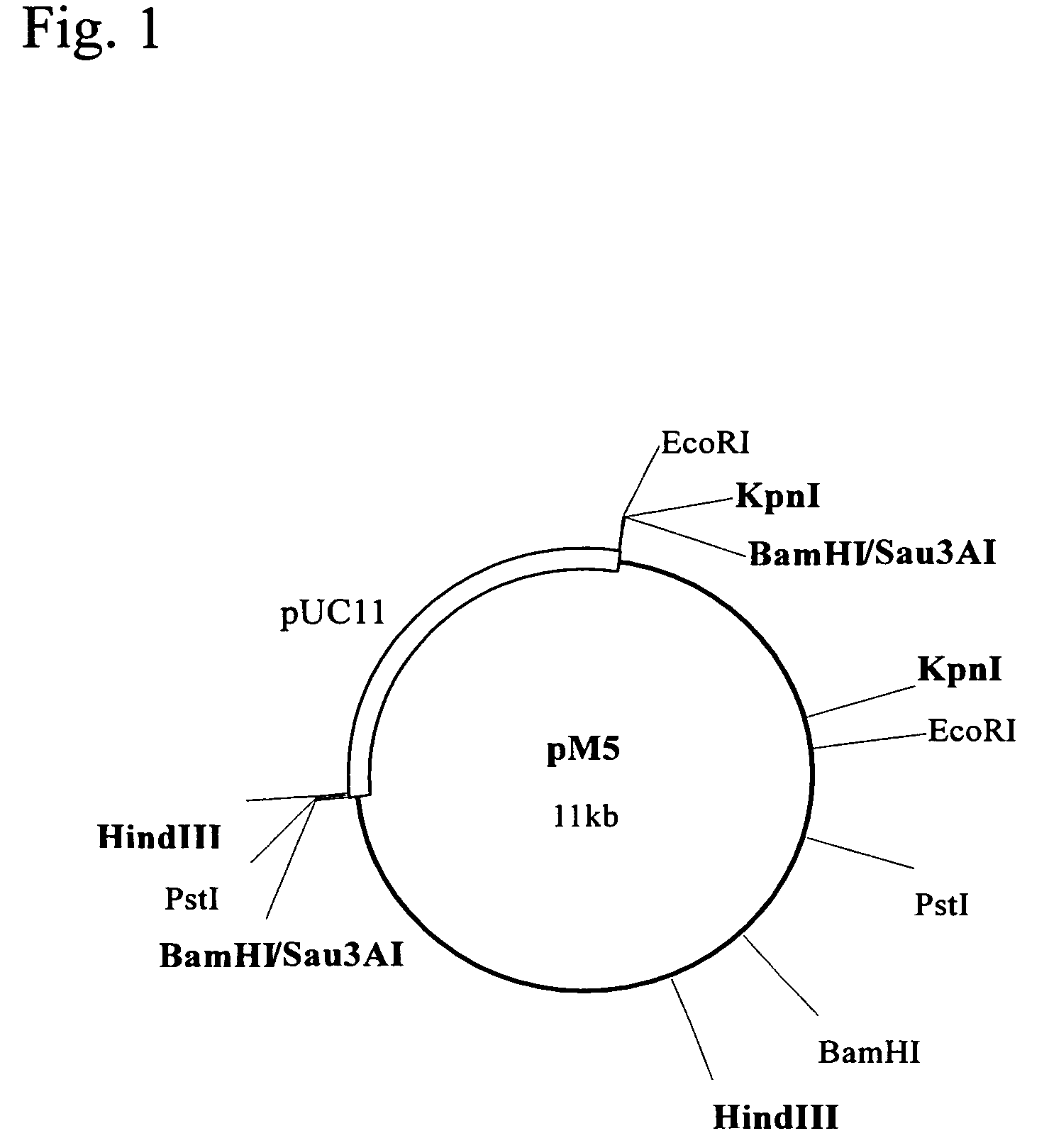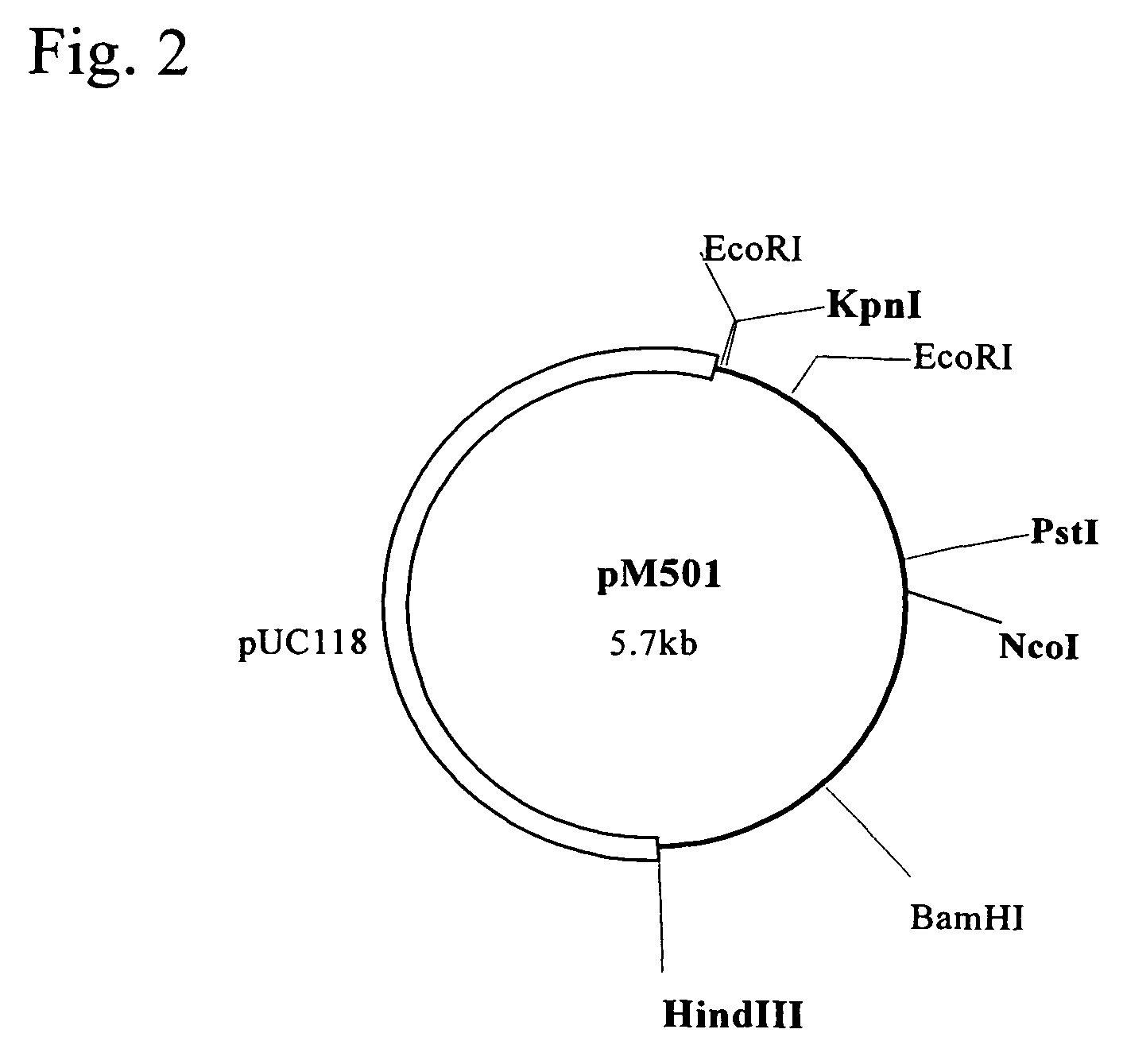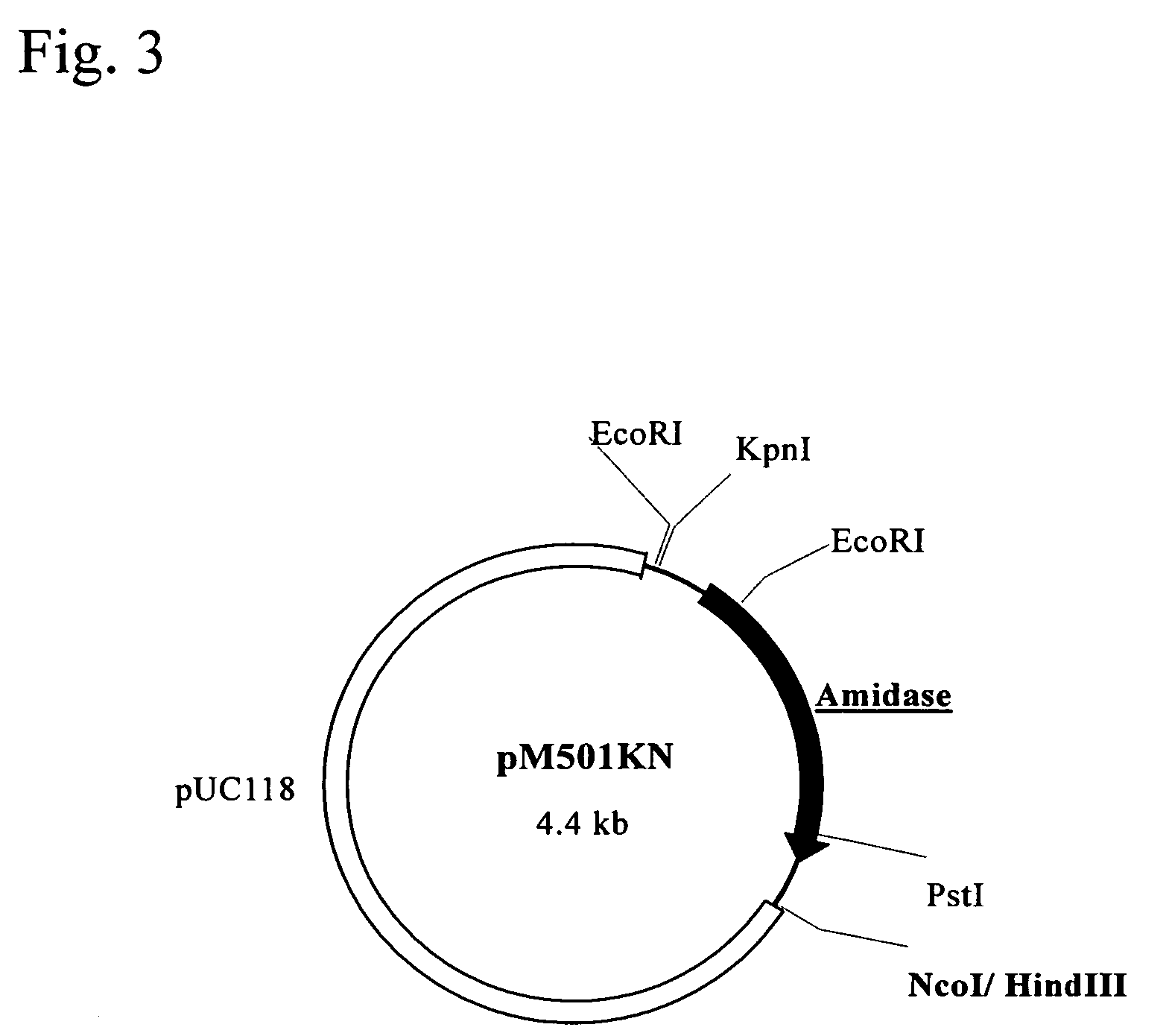Polynucleotide encoding a thermostable amide hydrolase and methods for producing an L-α-amino acid
a technology of amide hydrolase and polynucleotide, which is applied in the direction of enzymology, organic chemistry, transferases, etc., can solve the problems of low stability of amide hydrolases derived from these microorganisms in the range of ordinary temperature or higher, and achieve excellent thermostability and efficient production
- Summary
- Abstract
- Description
- Claims
- Application Information
AI Technical Summary
Benefits of technology
Problems solved by technology
Method used
Image
Examples
example 1
[0077]First, 100 ml of medium (pH 7.5) containing 0.8% polypeptone, 0.4% yeast extract, 0.2% NaCl, 0.005% CaCl2.2H2O, and 0.008% MgCl2.6H2O was placed in a 500 ml-Erlenmeyer flask and sterilized in an autoclave. To the medium, Thermus aquaticus NCIMB11243 was inoculated and cultured at 70° C. for 3 days.
[0078]After completion of the culturing, bacterial cells were centrifugally collected from the cultured product, washed once with 50 mM NH4Cl—NH4OH buffer (pH 9.0) of the same amount as the cultured product and suspended in 5 ml of the same buffer.
[0079]To 1.5 ml of the bacterial cell suspension, 1.5 ml of a 2% phenylalanine amide solution was added and a reaction was carried out at 70° C. for one hour. After completion of the reaction, bacterial cells were centrifugally removed from the reaction solution. Thereafter, analysis of quantity and optical purity was carried out using high performance liquid chromatography.
[0080]As a result, L-phenylalanine (0.28%) was produced. Its optica...
example 2
[0081]First, 100 ml of medium (pH 7.3) containing 0.5% polypeptone, 0.3% meat extract, and 0.8% NaCl was placed in a 500 ml-Erlenmeyer flask and sterilized in an autoclave. To the medium, Bacillus stearothermophilus NCIMB8923 was inoculated and cultured at 55° C. for 3 days.
[0082]After completion of the cultivation, bacterial cells were centrifugally collected from the cultured product, washed once with 50 mM NH4Cl—NH4OH buffer (pH 9.0) of the same amount as the cultured product and suspended in 5 ml of the same buffer.
[0083]To 1.5 ml of the bacterial cell suspension, 1.5 ml of a 2% phenylalanine amide solution was added and a reaction was carried out at 55° C. for one hour. After completion of the reaction, bacterial cells were centrifugally removed from the reaction solution. Thereafter, analysis was carried out using high performance liquid chromatography in the same conditions as in Example 1. As a result, L-phenylalanine (0.49%) was produced. The optical purity was 100% ee.
example 3
[0084]To 1.5 ml of a bacterial cell suspension prepared in the same manner as in Example 1, 1.5 ml of a 2% tert-leucine amide solution was added and a reaction was carried out at 70° C. for 70 hours. After bacterial cells were centrifugally removed from the reaction solution, analysis was carried out by high performance liquid chromatography. As a result, L-tert-leucine (0.38%) was produced. The optical purity was 100% ee.
[HPLC Analysis Conditions]
(Quantification Analysis)
Column: Inertsil ODS-3V (4.6φ×250 mm)
Mobile phase: 0.1% aqueous solution of phosphoric acid
Flow rate: 1 ml / min
Detection: RI
(Optical Purity Analysis)
Column: SUMICHIRAL OA-5000 (4.6φ×150 mm)
Mobile phase: 2 mM copper sulfate:methanol (85:15)
Flow rate: 1 ml / min
Detection: UV (254 nm)
PUM
| Property | Measurement | Unit |
|---|---|---|
| temperature | aaaaa | aaaaa |
| temperature | aaaaa | aaaaa |
| temperature | aaaaa | aaaaa |
Abstract
Description
Claims
Application Information
 Login to View More
Login to View More - R&D
- Intellectual Property
- Life Sciences
- Materials
- Tech Scout
- Unparalleled Data Quality
- Higher Quality Content
- 60% Fewer Hallucinations
Browse by: Latest US Patents, China's latest patents, Technical Efficacy Thesaurus, Application Domain, Technology Topic, Popular Technical Reports.
© 2025 PatSnap. All rights reserved.Legal|Privacy policy|Modern Slavery Act Transparency Statement|Sitemap|About US| Contact US: help@patsnap.com



